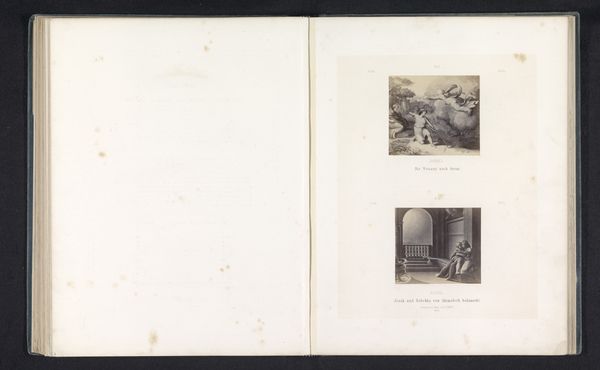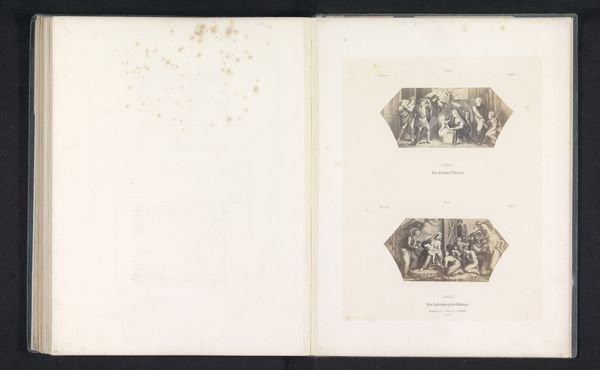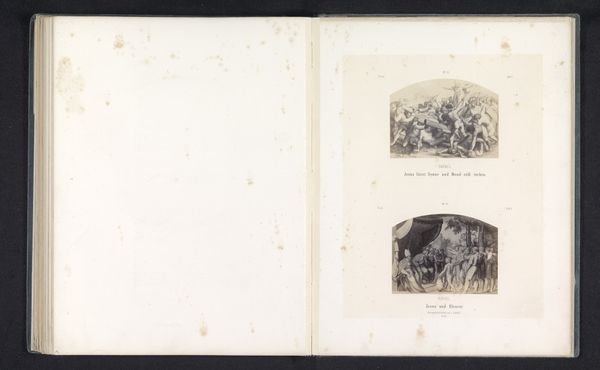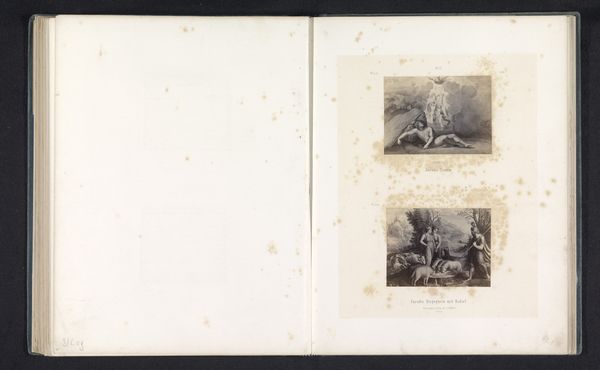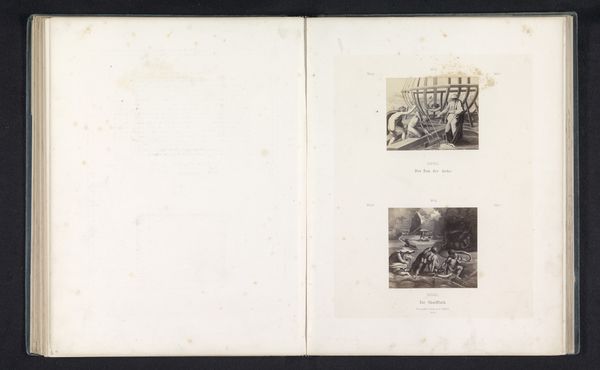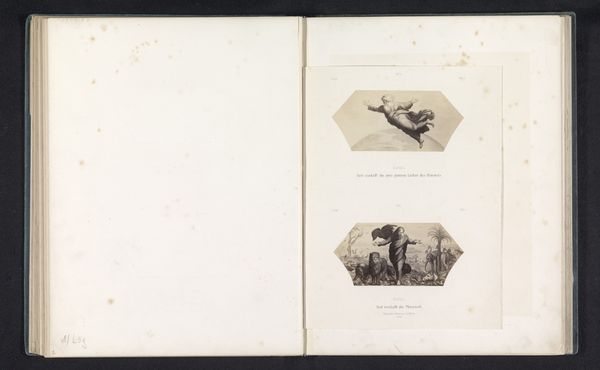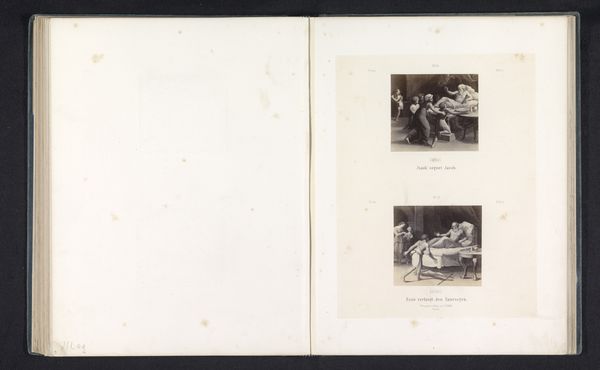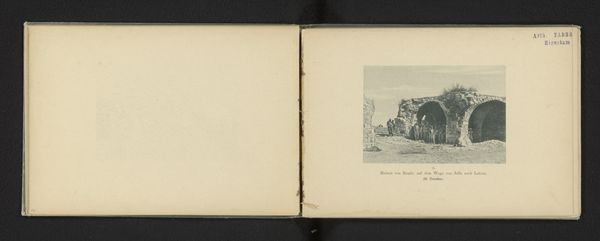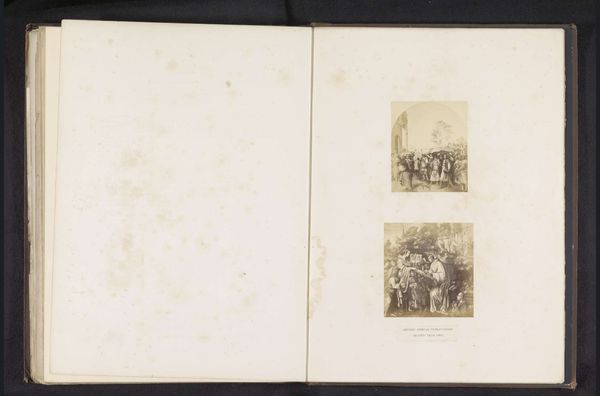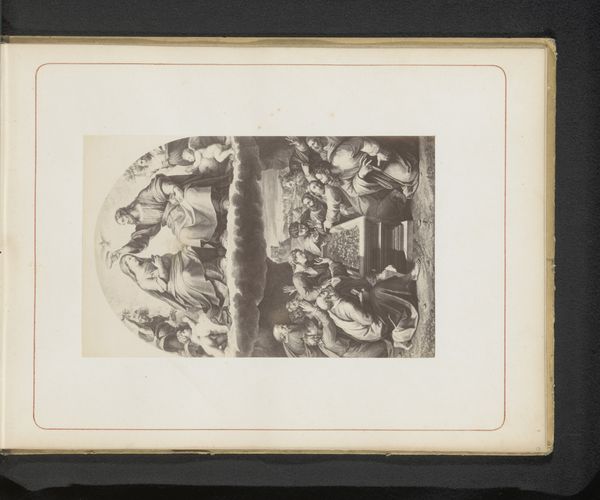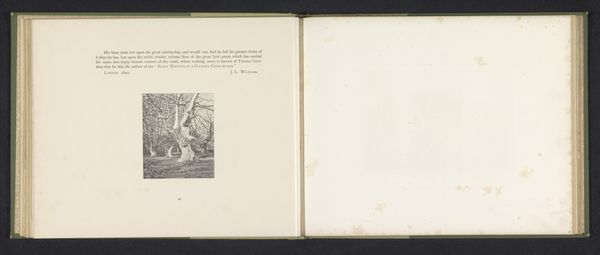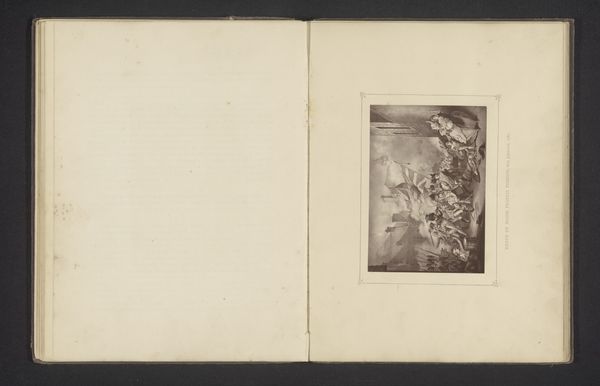
Fotoreproducties van prenten naar fresco's met voorstellingen van het bezoek van engelen aan Abraham en Lots vlucht uit Sodom door Rafaël voor de loggia's in het Vaticaan before 1861
0:00
0:00
mixed-media, tempera, print, photography, engraving
#
mixed-media
#
medieval
#
tempera
# print
#
11_renaissance
#
photography
#
engraving
Dimensions: height 325 mm, width 250 mm
Copyright: Rijks Museum: Open Domain
Editor: So, here we have “Fotoreproducties van prenten naar fresco's met voorstellingen van het bezoek van engelen aan Abraham en Lots vlucht uit Sodom door Rafaël voor de loggia's in het Vaticaan,” made before 1861 by Gustav Schauer. They look like engravings based on frescoes…The detail is really striking. What stands out to you? Curator: Well, for me, the reproduction process itself is key. Here we have photographs of prints of frescoes, layering the means of production. Think about the labor involved. From Raphael's original fresco, to the printmaker’s work to translate it into a reproducible format, then the photographer, Schauer, capturing *that*. It speaks to a hierarchy of art making, doesn’t it? How do we value the original versus the copy? Editor: That’s interesting. I hadn’t really thought about the different layers of creation. So the *reproduction* becomes its own form of artistic production and consumption? Curator: Exactly. Consider the social context too. Before widespread photographic reproduction, how did people access these masterpieces? Prints made art more accessible, photographs even more so, influencing taste and spreading artistic ideas beyond the elite. These reproductions democratize, but also perhaps dilute, Raphael's original intention. Are we really seeing Raphael or Schauer's interpretation of accessibility through reproduction? Editor: I see what you mean. Each layer changes the meaning a bit, both democratizing and diluting at the same time. Curator: It really makes you question the boundaries we place on art and craft, high and low culture, doesn’t it? And who benefits from those distinctions? Editor: Definitely gives me a lot to think about regarding accessibility, value, and the role of the artist… or artists. Curator: Indeed. Looking at art this way, as a product of materials and labor, opens up so many avenues for understanding its place in society.
Comments
No comments
Be the first to comment and join the conversation on the ultimate creative platform.
